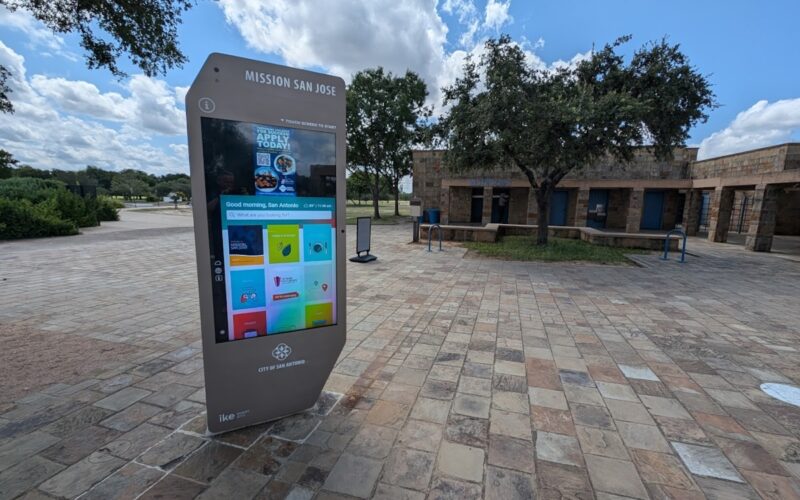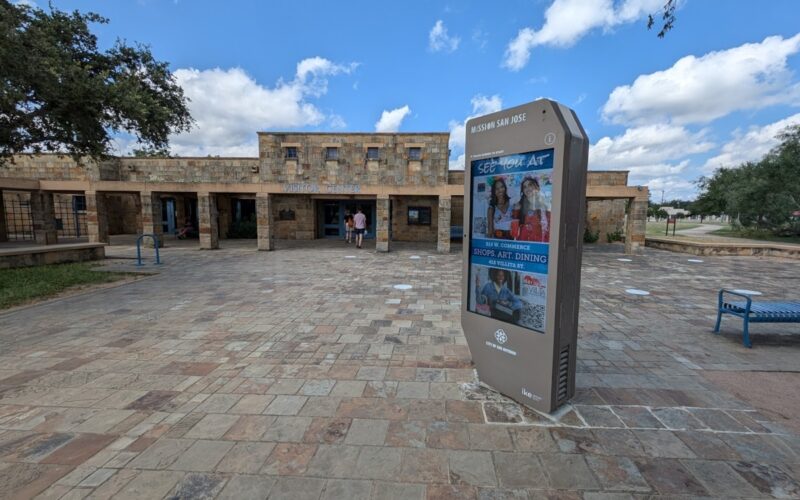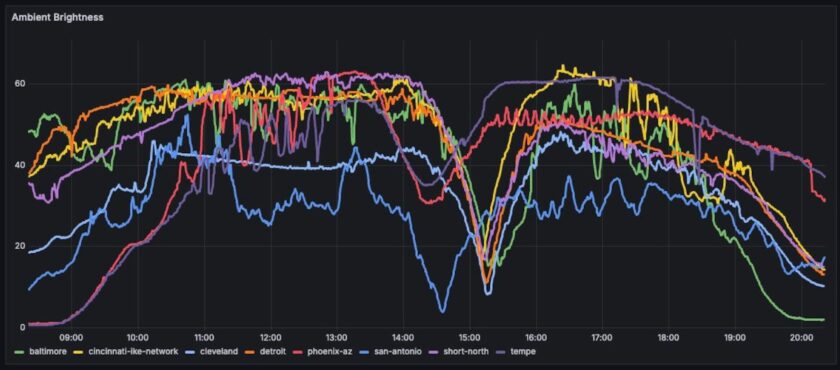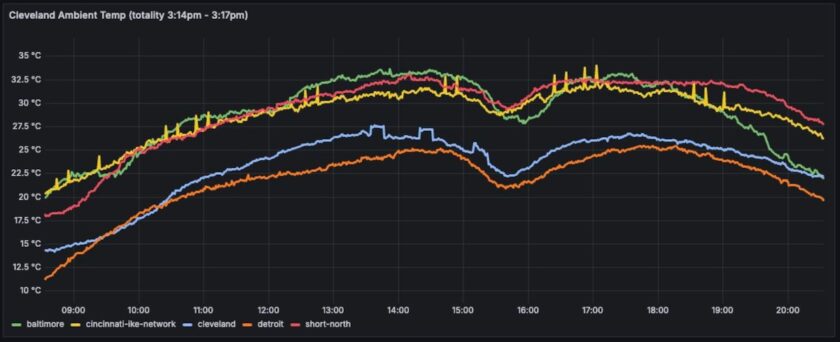Houston | Roadside DooH screens are usually integrated into bus shelters. But in US cities without bus shelters, DooH providers are turning to smart kiosks to give advertising screens an added value. While the (over)ambitious LinkNYC project is reaching its limits, Orange Barrel Media is already rolling out smart city steles in 19 US cities – similar to LinkNYC, only with larger screens and more intelligent functionalities.

IKE Smart City: Like Google, Only Better
Orange Barrel Media (OBM) is one of the DooH pioneers in North America. While the national champions Clear Channel, Outfront, Lamar, and the global OoH market leader JC Decaux dominate the US market, OBM focuses on individual lighthouse installations on building facades and freestanding digital billboards along major transportation routes. Through its subsidiary IKE Smart City, OBM is also expanding into scalable national networks for the first time.




Since 2015, IKE has been installing smart city kiosks at selected roadside locations in city centers, often no more than 15 to 20 per city. As of summer 2024, there are over 500 kiosks in 19 US metropolitan areas.
Unlike the globally known LinkNYC network, IKE’s kiosks feature double-sided, larger high-brightness touchscreens (65 inches) with 3,000 nits of brightness. In addition to displaying DooH campaigns for refinancing, these kiosks offer users free WiFi, city information, store directions, and emergency assistance. The displays also provide a sense of security for passers-by at night.
OBM places great emphasis on the added value their smart city kiosks provide to cities and local businesses. The kiosks are equipped with various sensors, and OBM offers the live data to city administrations through a dashboard and API. Optional surveillance cameras can also be integrated. Additionally, the kiosks are designed to accommodate extra sensors during their service life, with the necessary space and connections already in place.
The visualization of this data is especially evident during events like the solar eclipse in the US, as can be seen in these images:


Where the kiosk concept failed
Back to New York City, where the current 2,129 LinkNYC kiosks have become a familiar sight in the urban landscape. The smart city kiosks offer free wifi, USB charging, free national calls and an integrated web touchscreen. They are especially popular among homeless New Yorkers.
Invisible to the general public, the kiosks are also equipped with sensors, developed in collaboration with Google, that provide the city administration with data on air quality, traffic, and other metrics.
Originally, 10,000 kiosks were planned for installation across all five boroughs, replacing decommissioned payphones and funded entirely by revenue from digital out-of-home advertising.
However, the roll-out in 2016 failed spectacularly. Instead of the planned 10,000 kiosks citywide, installations were concentrated primarily in highly marketable locations in Manhattan. With only 2,129 kiosks, the project is miles away from reaching its target. LinkNYC’s business plan collapsed, and this failure wasn’t solely due to the pandemic. The operator consortium defaulted on payments because they didn’t meet the agreed-upon network size and minimum advertising revenue. According to media reports, the city council is owed USD 70 million.
